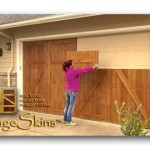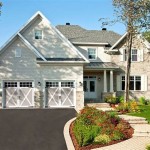```html
Maximising Garage Space With Pull Up Bars in Seattle
Garages in Seattle often serve multiple purposes: parking vehicles, storing tools and equipment, acting as workshops, and sometimes, even functioning as home gyms. Given the rising cost of real estate and the desire to utilize every square foot of available space, efficient garage organization is paramount. Integrating a pull up bar into a garage setup presents a unique challenge and opportunity. It requires careful planning to balance fitness goals with the inherent spatial constraints of a typical garage.
Selecting the right pull up bar and installation method are crucial for maximizing space. The market offers various types, each with its own advantages and disadvantages concerning space utilization. Considerations must be given to ceiling height, garage door operation, storage needs, and the overall intended use of the garage. The integration process necessitates a thoughtful evaluation of the existing structure and a clear understanding of individual fitness requirements.
Choosing the Right Pull Up Bar Type
The first step in optimizing garage space with a pull up bar in Seattle involves selecting the appropriate type of bar. Several options cater to different needs and garage configurations. These include ceiling-mounted, wall-mounted, doorway, and power rack-mounted pull up bars. Each type presents a unique footprint and installation requirement, impacting the overall usability of the garage.
Ceiling-mounted pull up bars are directly attached to the ceiling joists. This option is ideal for garages with sufficient overhead clearance and unobstructed ceiling space. They provide a stable and robust platform for various exercises, including pull-ups, chin-ups, and hanging leg raises. However, their fixed location may limit flexibility and require careful consideration of existing lighting fixtures, garage door tracks, and overhead storage.
Wall-mounted pull up bars are affixed to the garage wall, usually with heavy-duty brackets. They offer more flexibility in terms of placement compared to ceiling-mounted bars. This type is suitable for garages with lower ceilings or where ceiling obstructions exist. It is essential to ensure the wall is structurally sound and capable of supporting the user's weight. Stud finders and appropriate mounting hardware are crucial for a secure installation.
Doorway pull up bars are designed to be temporarily installed within a door frame. They offer the advantage of portability and require minimal installation. However, they may not be suitable for all door frames and typically have a lower weight capacity. They can also obstruct access through the doorway when in use, making them less desirable for frequently used garages.
Power rack-mounted pull up bars are integrated into a power rack or squat rack system. This option is well-suited for individuals who engage in a comprehensive strength training program. The power rack provides a stable and versatile platform for various exercises, and the integrated pull up bar adds another dimension to the workout. However, power racks occupy a significant amount of floor space, making them less suitable for smaller garages.
Optimizing Installation for Space Efficiency
Proper installation is paramount not only for safety but also for maximizing available garage space. Careful planning and execution are essential to ensure the pull up bar does not impede the regular use of the garage for parking or storage. The installation process should consider existing structural elements, electrical wiring, plumbing, and the overall layout of the garage.
Before installing any type of pull up bar, thoroughly assess the structural integrity of the mounting surface. For ceiling-mounted bars, locate the ceiling joists and ensure they are capable of supporting the weight of the user. For wall-mounted bars, use a stud finder to identify wall studs and verify their load-bearing capacity. Using appropriate mounting hardware, such as lag screws or expansion bolts, is crucial for a secure and stable installation.
Consider the orientation of the pull up bar in relation to the garage door and other equipment. Position the bar in a location that minimizes interference with the garage door opening and closing. Ensure there is adequate clearance around the bar for performing exercises safely. Avoid placing the bar in areas where it could obstruct access to storage shelves or other essential equipment.
For smaller garages, consider installing a folding or retractable pull up bar. These types of bars can be folded up or retracted when not in use, effectively freeing up valuable space. While they may not be as robust as fixed bars, they offer a practical solution for individuals who prioritize space efficiency.
When installing a pull up bar, pay attention to the surrounding environment. Ensure the area around the bar is free from obstacles that could pose a safety hazard. Consider adding padding or mats to the floor beneath the bar to cushion falls and reduce noise. Proper lighting is also essential for safe and effective workouts.
Integrating Storage Solutions
Maximizing garage space with a pull up bar requires integrating storage solutions to keep equipment and belongings organized. A cluttered garage can impede movement and make it difficult to utilize the pull up bar effectively. Implementing smart storage strategies can help create a functional and efficient workout space without compromising the primary function of the garage.
Utilise vertical space by installing shelving units or cabinets along the walls. These storage solutions can accommodate tools, equipment, and other belongings, freeing up valuable floor space. Consider using clear storage bins to easily identify the contents and keep items organized. Labeling the bins can further enhance organization and efficiency.
Overhead storage racks are an excellent option for storing bulky or seasonal items, such as holiday decorations or camping gear. These racks are suspended from the ceiling, utilizing unused vertical space. Ensure the overhead storage racks are securely installed and capable of supporting the weight of the stored items.
Consider using wall-mounted tool organizers to keep tools readily accessible and prevent clutter. Pegboards, tool racks, and magnetic tool strips can help organize tools efficiently and keep them within easy reach. This can prevent tools from being scattered around the garage, maximizing available space.
Folding or collapsible workout equipment can be a valuable addition to a garage gym. Folding benches, adjustable dumbbells, and resistance bands can be easily stored when not in use, freeing up valuable floor space. These items provide versatility in workout routines without compromising space efficiency.
Regularly declutter the garage to eliminate unnecessary items and maintain a clean and organized workout space. Dispose of unwanted items or donate them to charity. A clutter-free garage is not only more functional but also safer and more conducive to effective workouts.
Integrating a pull up bar into a Seattle garage requires a strategic approach that considers space limitations, fitness goals, and storage needs. By carefully selecting the right type of pull up bar, optimizing installation, and implementing smart storage solutions, it is possible to create a functional and efficient garage gym without sacrificing the primary function of the space.
```
The Best Pull Up Bars For 2024 Wall Mount Door Free Standing More

Mounting A Pull Up Bar In Your Garage Stud Ceiling Or Wall Mounted

Profile One Squat Rack With Pull Up Bar Prx Performance

Garage Pull Up Bars Archives Stud Bar Ceiling Or Wall Mounted
What S The Best Place To Install A Pull Up Bar In My House Quora

Your Garage Needs This Stud Bar Ceiling Or Wall Mounted Pull Up

Calisthenics Facility Seattle Su Redhawk Center Outdoor Pull Up And Dip Bars United States Spot

Ceiling Mounted Garage Pull Up Bar Stud Or Wall

Profile One Squat Rack With Pull Up Bar Prx Performance

Stall Bar System Options Movestrong
Related Posts








